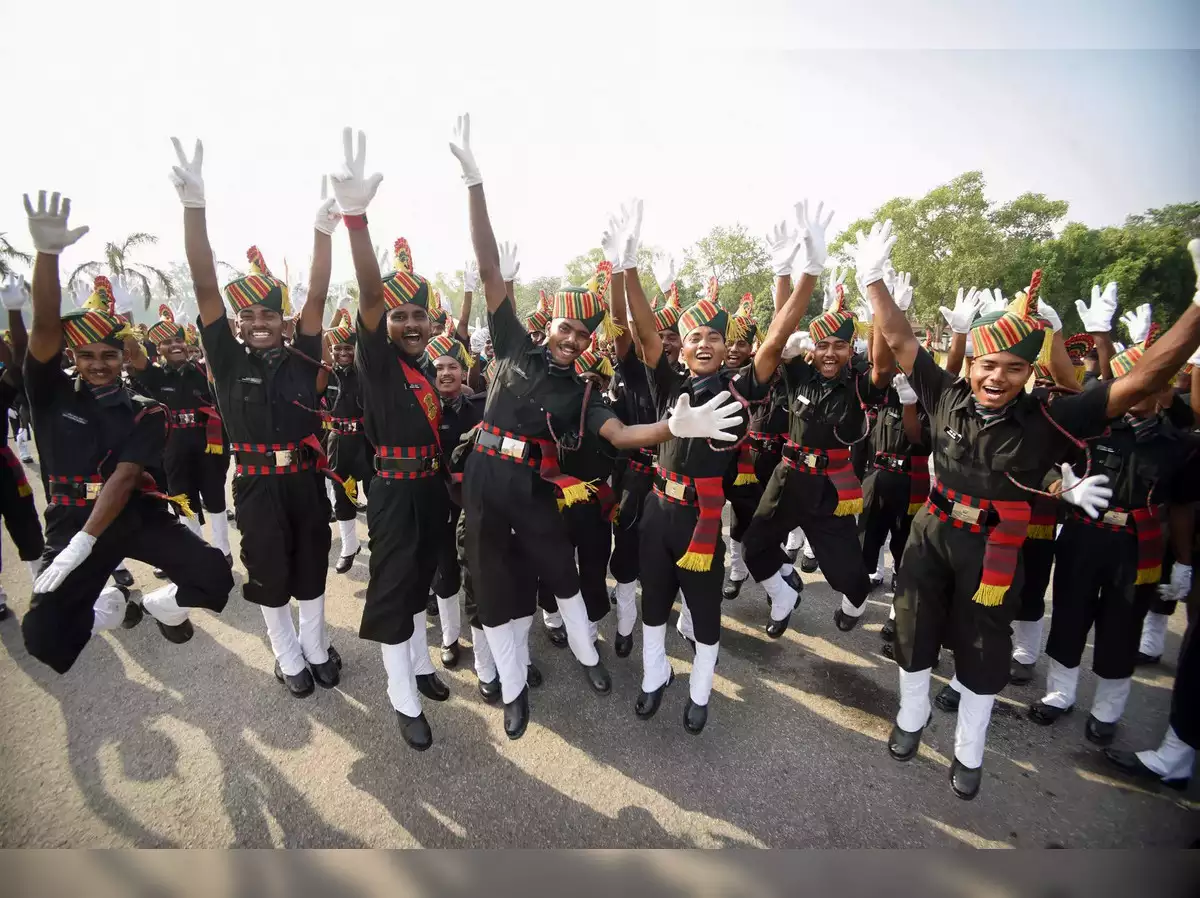The Agniveer scheme addresses both age and financial issues, but the Agniveer tenure needs to increase.
For over 30 years, the need to reduce the soldiers’ average age has been repeatedly highlighted. In 1976, for manpower requirement needs of a post-1962 expanding Army, colour (minimum) service (seven years till 1965), was increased from 10 to (pensionable) 15 years and all post-1981 retirees started earning a Rs 95 monthly pension.
However, the adverse effects of having “older soldiers” soon needed a new personnel policy. In 1985, a Vice Chief Lt Gen Balaram-headed expert committee observed that terms of engagement were the “least cost-effective among many options that could be considered”. Realisation that loss of youthfulness was adversely impacting combat effectiveness made colour-service reduction imperative. A Sri Lanka IPKF analysis (1987-90) concluded: “Wherever there was a younger age group in a unit, it did better.” In the early 1990s, the Ministry of Defence (MoD) confirmed to 10th Lok Sabha’s Estimates Committee, a review of Army colour-service. The 1999 lessons of Army’s Kargil and ongoing Siachen experiences reinforced the need for younger soldiers and commanding officers. In 2000, security expert Jasjit Singh wrote that at an average age of 37 years, Indian Army was far older than its counterparts of Nato (24 years), China (25 years) and Pakistan (25 years). Yet, the Services surprisingly accepted the 5th Pay Commission recommendation to increase the retiring age by two years, but then asked government for more promotion vacancies to reduce the ages of the commanding officers (eventually approved by the Ajai Vikram Singh Committee in 2005).
Post the 1999 “Kargil Review Committee Report”, the long-awaited colour-service review took a backseat. In 2009, the 14th Lok Sabha’s 34th SCOD report again flagged the need to “revert to non-pensionable colour service, and to assure soldiers of a job after leaving”. The Army’s 2020 “Tour of Duty” proposal was the precursor of the Agniveer scheme.
During the World Wars, Army 1939’s strength of two lakh increased to 25 lakh by 1945, and reduced to 3.5 lakh by 1948. Concurrently, defence pensioners increased from 3.8 lakh in 1950, to 6 lakh in 1970 and 26.8 lakh in 2021 (705% from 1950). Pensions went up from Rs 95 in 1981 (inflation indexed Rs 1,900 in 2024—a 20-time increase) to Rs 33,000 in 2024, an unsustainable over 347-times increase. This was on account of 6th and 7th Pay Commission increases; with OROP making these applicable even to earlier retirees; and with average life expectancy increasing. Pay/pensions in 2011-12 were 49% and in 2020-21, 61% of the defence budget. Army accounts for about 68.1% of the defence budget, while salaries/pensions of the Services account for about 59% of revenue budget, leaving only 27.7% for capital expenditure (new weapons/equipment).
“Non-audedars” retire by 35 years, and with Services the only government organisation on Old Pension Scheme, this remains an important incentive. The challenges are “statutorily” ensuring jobs for Agniveers not retained, and retaining the correct percentage. The Raksha Mantri has already acknowledged the need to “tweak the scheme as we go along”.
The Agniveer scheme addresses both age and financial issues, but the Agniveer tenure needs to increase to five or earlier seven years and could be given current soldier salaries to reduce angst. Secondly, since Agniveers can only be non-audedars, in consonance with the units’ combat organisations, a minimum 55% need retention for Infantry Battalions. The Army will similarly need to calculate “overall retention percentage” for different units. While recruitment remains “All India All Class”, within this it is for the Army to staff different types of units and safeguard their core ethos.
A conceptual construct/vision differs from its implementation details. Leaders give the vision, and the staff make conforming details. However, with turf protection resistance, the government has been unable to replicate the 1962 “Emergency Commission” short service (non-pensionable) officer exits into other government departments. Hence, an ideal situation would be for all PMF/CPO aspirants to first do an Agniveer tenure. Enhanced synergies, professionalism and savings will ensue. The NSA too spoken of this. For Agnipath to be successful, “statutory provisions” must safeguard this for aspirants’ reassurance. If this meets resistance, then exiting Agniveers must be given “statutory assurance” of follow up jobs.
Finally, feedback from units about Agniveers is encouraging and we will be able to retain the best
Lt Gen Ajai Singh (Retd), a volunteer Kargil/Siachen war veteran retired as Commander-in-Chief of the Andaman & Nicobar Command and earlier was ADG Military Operations and DG Financial Planning. He has authored the draft of the “Army Land Warfare Doctrine, 2018”, and two recent Army studies implemented: post Doklam the 11-month study on “Reorganising Army HQ” for more accountable and agile decision making, and post Galwan, the 2-month study on “Re-orientation of Army Strategic Outlook and Operations”. Views are personal.

